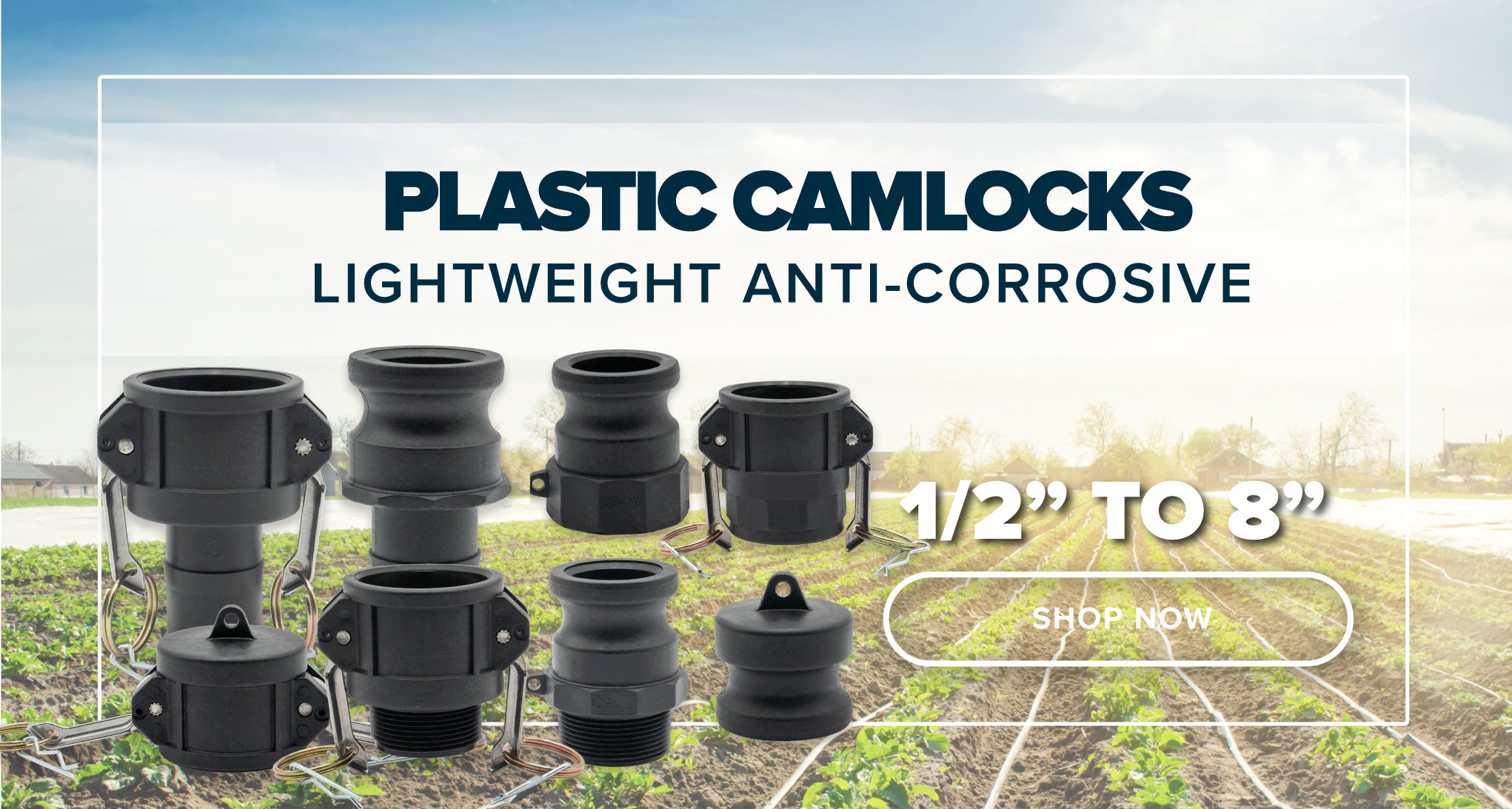Measuring camlock fittings accurately is essential to ensure that you choose the right size and type for your specific application. Camlock fittings come in various sizes and configurations, so taking precise measurements is crucial to guarantee a proper fit and secure connection. Here's a step-by-step guide on how to measure camlock fittings:
Step 1: Understand Camlock Fitting Sizing: Camlock fittings are categorized by their size, which is typically based on the diameter of the hose or pipe they are intended to connect. The size is measured in inches, and it refers to the internal diameter of the camlock fitting's male adapter or the external diameter of the female coupling.
Step 2: Determine the Type of Connection: Before measuring, identify the type of camlock fitting you need based on the connection type required for your application. The most common connection types include Type A, Type B, Type C, Type D, Type E, Type F, Type DC, and Type DP. Each type has a specific configuration, so make sure to choose the one that matches your equipment and hoses.
Step 3: Measure the Hose or Pipe: To measure the hose or pipe, follow these steps:
- Place the hose or pipe on a flat surface.
- Use a tape measure or caliper to measure the external diameter (OD) of the hose or pipe if it's a male adapter or the internal diameter (ID) if it's a female coupling.
- Make sure to measure across the widest point of the hose or pipe.
Step 4: Refer to Camlock Size Chart: Once you have the measurement of the hose or pipe, refer to a camlock size chart or table provided by the manufacturer. This chart will help you determine the appropriate camlock fitting size based on the measurement you obtained. The chart will specify which size corresponds to the measured diameter.
Step 5: Consider Additional Factors: In addition to the size, consider other factors that might affect the choice of camlock fitting:
- Material: Choose the appropriate material (e.g., stainless steel, aluminum, brass, polypropylene) based on compatibility with the fluid being transferred and the environment.
- Type: Select the correct camlock type that matches the connection needs of your equipment.
- Pressure Rating: Ensure that the camlock fitting can handle the pressure of the fluid being transferred.
- Temperature Rating: Check the temperature compatibility of the fitting with the fluid and the environment.
Step 6: Verify Compatibility: Confirm that the camlock fitting you selected is compatible with the other components of your fluid-handling system. This includes ensuring that the male adapter fits securely into the hose or pipe, and the female coupling matches the male adapter's size and type.
Step 7: Double-Check Dimensions: Precision is crucial when measuring camlock fittings. If possible, measure the hose or pipe diameter multiple times to ensure accuracy. Using a digital caliper can provide more precise measurements compared to a regular tape measure.
Step 8: Consult with Experts: If you're uncertain about the measurements or which camlock fitting to choose, don't hesitate to consult with experts in the field or contact the manufacturer's customer support. They can provide guidance and help you make the right selection based on your specific requirements.
Step 9: Regular Maintenance and Inspection: After fitting the camlock to the hose and using it in your fluid-handling system, perform regular maintenance and inspections. Check for wear, damage, or corrosion that could affect the fitting's performance. Replace any worn or damaged components promptly to ensure a secure and leak-free connection.
Final Thoughts: Accurate measurement of camlock fittings is essential to ensure a proper fit and reliable fluid transfer in various industries. By understanding the sizing principles, identifying the connection type, measuring the hose or pipe accurately, and considering additional factors, you can confidently select the appropriate camlock fitting for your application. Remember to refer to size charts, consult experts if needed, and perform regular maintenance to ensure optimal performance and safety.







